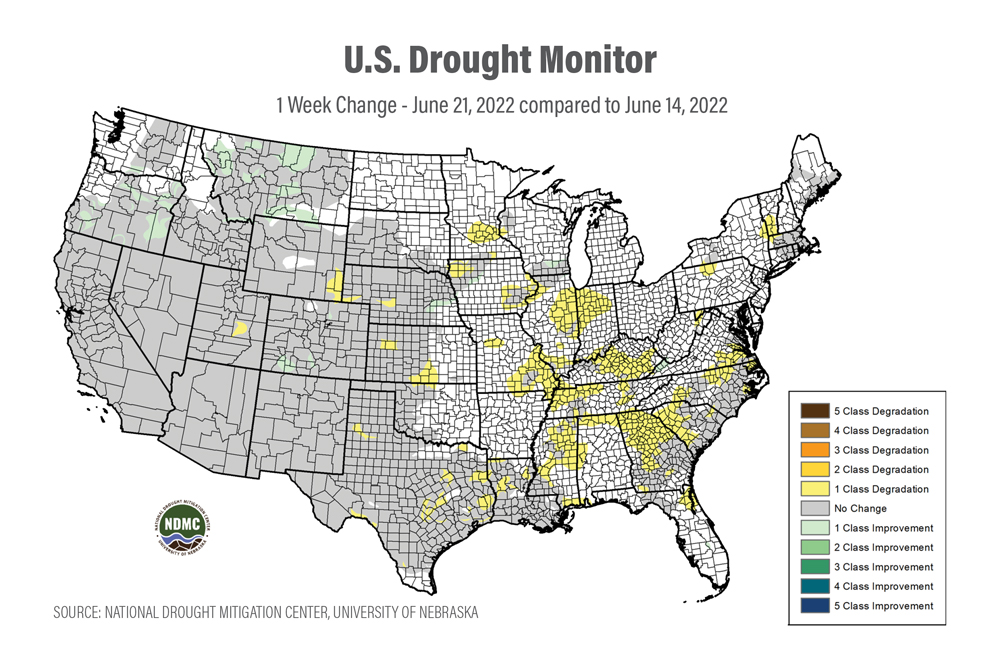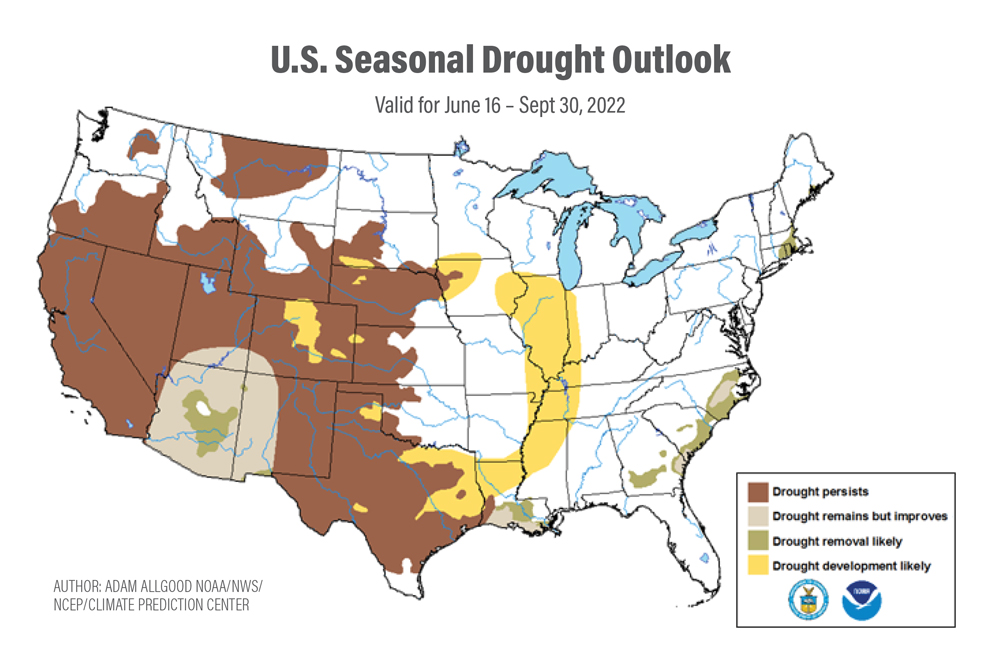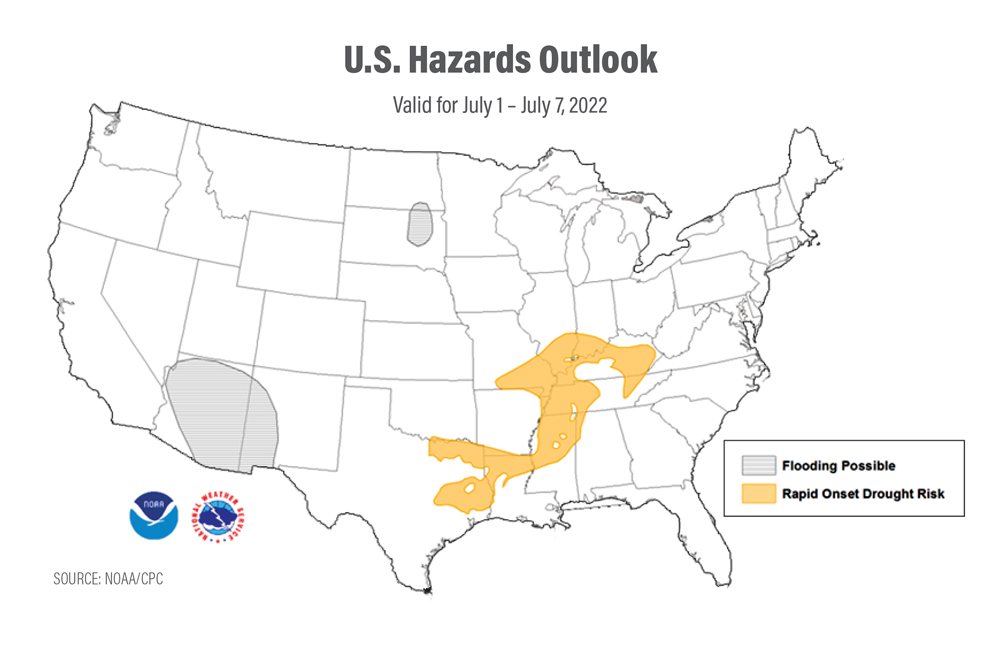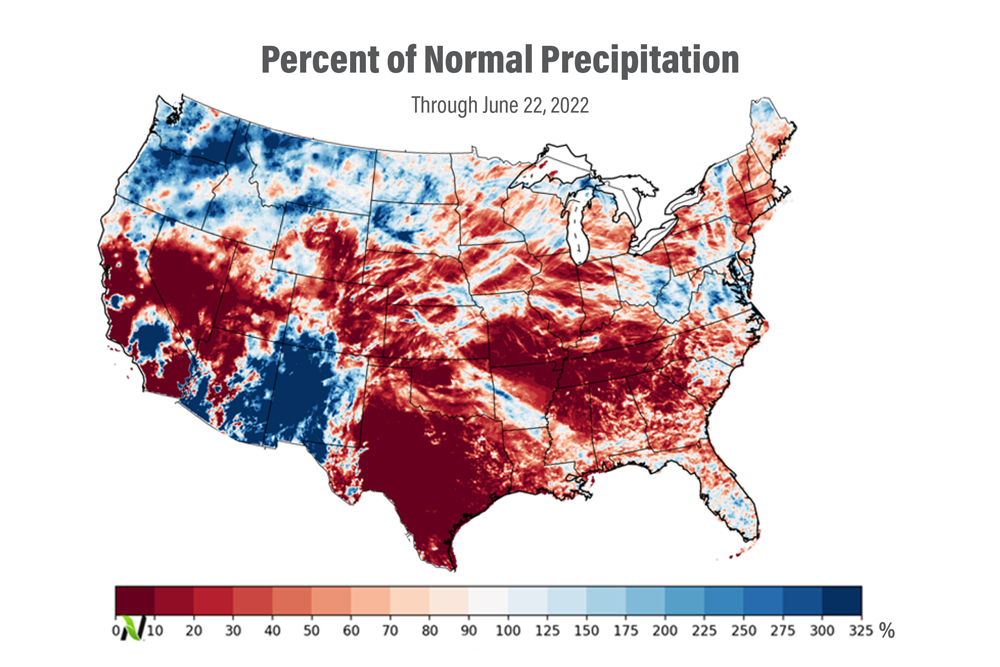Dry Weather Status in 4 Maps: Could We See a Flash Drought?

The heat is on. The combination of high temperatures and low precipitation is expanding the drought footprint across the country.
As of June 21, the U.S. Drought Monitor shows 62% of the country covered by some form of dryness/drought, up five points over the past week.
Above-normal temperatures plagued much of the central and eastern contiguous U.S. this week, from the Great Plains eastward to the Mississippi Valley and Southeast. Precipitation was lacking in many locations that experienced excessive (in some cases record) heat, leading to widespread expansion of abnormal dryness and moderate drought conditions along the Mississippi and Ohio Valleys, the Southern Plains, and the Southeast, according to the Drought Monitor.
From the Central Plains northward, despite the excessive heat (daytime high temperatures above 100°F several days this week), recent improvements driven by an active storm track leading up to this week resulted in modest, more targeted degradations in the drought depiction.
Watch the latest AgDay weather forecast:
Drought is emerging in new areas, reports Matt Yarosewick, AgDay meteorologist.
“We’re watching for the possibility of a flash drought, which means drought conditions have not existed but over the next week or two we could see rapid development of those drought,” he says.
Yarosewick is watching for drought conditions to surface in Illinois, Indiana, Kentucky, Tennessee, Arkansas and eastern Missouri.
The isolated storms in the near-term forecast likely won’t provide large-scale relief to the emerging flash droughts, adds Eric Snodgrass, principal atmospheric scientist for Nutrien Ag Solutions.
“I am most concerned about the South, MidSouth and Lower Mississippi River Valley over the next 10+ days as these region continue to see much above normal temperatures,” he says.
To gauge your farm’s drought threat, take a look at these four maps:

This map shows how drought conditions have from June 14 to June 21. The yellow areas are where drought conditions have increased. How this progresses in the next two weeks will be critical in terms of crop development, Snodgrass says.

The National Weather Service’s Climate Prediction Center’s seasonal drought outlook calls for hot and dry conditions through the end of June, which may result in flash drought development across eastern Texas, northern Louisiana, the lower Mississippi Valley and the central Corn Belt. Above-average temperatures and below-average precipitation favored in the CPC outlook may cause these flash drought impacts to persist through the end of the outlook period. Areas of flash drought development are also likely across the Southeast through the end of June and into early July, but with both the monthly and seasonal outlooks favoring above-average rainfall, these drought conditions are less likely to persist on a seasonal time scale.

This map from NOAA/CPC shows regions during July 1 to July 7 that could experience flash drought.

This map shows the last 14-days of precipitation anomalies (% of normal) through June 22. The dark red indicates regions that have received less than half of normal rainfall during the last two heat waves. “Daily evaporation rates have ranged from 0.25 - 0.4 inches causing regional flash drought to develop (on top of regions that have been in long tern drought like in the Southern Plains,” Snodgrass says.







